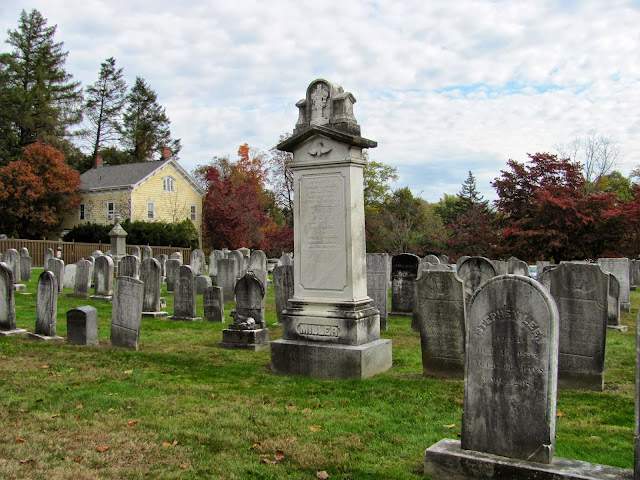The First Presbyterian Church in Yorktown was founded in 1730, and the first meeting house was built in 1737. Like St. George's Church, it was used as an arsenal and a barracks during the Revolutionary War. The British burned the church to the ground in 1779, and a replacement was built in 1785. The church that stands today was built in 1840.

There are a number of eighteenth-century sandstones lined up along the western side of the church, and others are scattered throughout the graveyard, running to the back of the church. Assuming that the present day church was built on the same footprint as the eighteenth-century one (which is not necessarily the case), this would mean that the graveyard surrounded the church on two sides. Assuming that the stones are in their original positions, they would have all faced the church.

Like the sandstones in St. Mark's Cemetery, all of the sandstones in the Presbyterian Cemetery face west. The church itself faces south. The stones themselves are very similar - the cherub on the stone of Abijah Lee, below, resembles that on the stone of Deborah Haight.
Unlike those in St. Mark's Cemetery, all of the stones in the Presbyterian Cemetery face the same way. Assuming that the present orientation of the eighteenth-century stones represents their original orientation, this would indicate that later parishioners followed the example of the first parishioners of the church. In contrast, the eighteenth-century stones at St. Mark's Cemetery face west, while the later nineteenth- and twentieth-century stones face east - perhaps because the church that originally informed the orientation of the stones was gone.

This stone was particularly fascinating, not only because it has a death's head (all of the sandstones at St. Mark's belong to the cherub phase) but because it was restored by its owners' great-great-grandson.





No comments:
Post a Comment